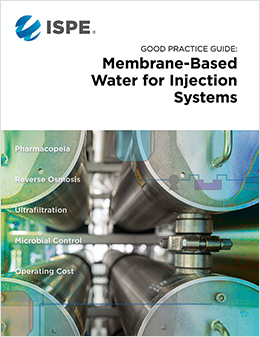Good Practice Guide: Membrane-Based WFI Systems

Published: May 2022
Pages: 196
For nearly a century, production of Water for Injection (WFI) was universally accepted to be distillation-based. As emphasis on costs and environmental concerns has grown, pharmacopeias around the world have focused on the quality attributes of WFI to allow for consideration of other production technologies. In 2017, the European Pharmacopoeia joined the US, Japan, and many other regulatory bodies (with the exception of China) in accepting membrane-based technologies for WFI production.
The ISPE Good Practice Guide: Membrane-Based Water for Injection Systems provides expert guidance on the design, operation, maintenance, and quality aspects of membrane-based WFI systems, including generation, storage, and distribution. This Guide reflects an industry wide collaborative effort by a diverse range of industry experts that include equipment providers, engineering firms, consultants, and pharmaceutical manufacturers. The information presented in this guide is the combination of proven technological solutions, microbial control methods, process analytical technology, and operations and maintenance practices.
This Guide is a complementary guide to several other ISPE Guidance Documents as indicated below. It is recommended that the readers have a baseline knowledge of pharmaceutical water systems and their unit operations prior to reading this Guide.
- ISPE Baseline Guide: Volume 4 – Water and Steam Systems (Third Edition)
- ISPE Good Practice Guide: Approaches to Commissioning and Qualification of Pharmaceutical Water and Steam Systems
- ISPE Good Practice Guide: Critical Utilities GMP Compliance
- ISPE Good Practice Guide: Ozone Sanitization of Pharmaceutical Water Systems
Guide Core Team
For the full list of contributors to this Guide see Guidance Document Teams












